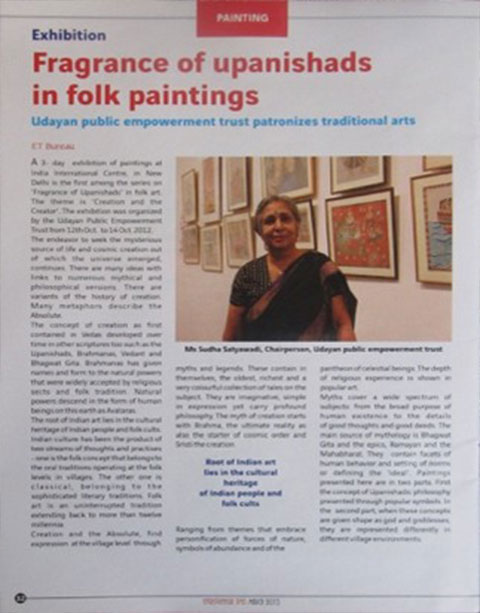Seminar & Exhibitions
- 2017 Seminar on Folklore and Tradition in India International Center on 17th Nov
- 2012 12-14 October ‘Fragrance of Upanishad in Folk Paintings’ in India International Center New Delhi
- 2009 India Habitat Centre, New Delhi ‘ Myth and Folk Art ‘ of India from 23 -25th Nov
- 2009 June, on ‘Tribal Paintings of India and Botswana’ in Habitat Center New Delhi
- 2007 October 15th -26th. ‘Folk Art of India’ Pittsburgh in the University of Pittsburgh from 16th to 26 July.
- 1995 September, ‘India and Africa” in Botswana Museum, Gaborone, Botswana
- 1991 Stanford University, California, USA
- 1990 ‘Glimpses of folk art’ in Indian Fine Arts and Crafts Society (AIFACS) in New Delhi on
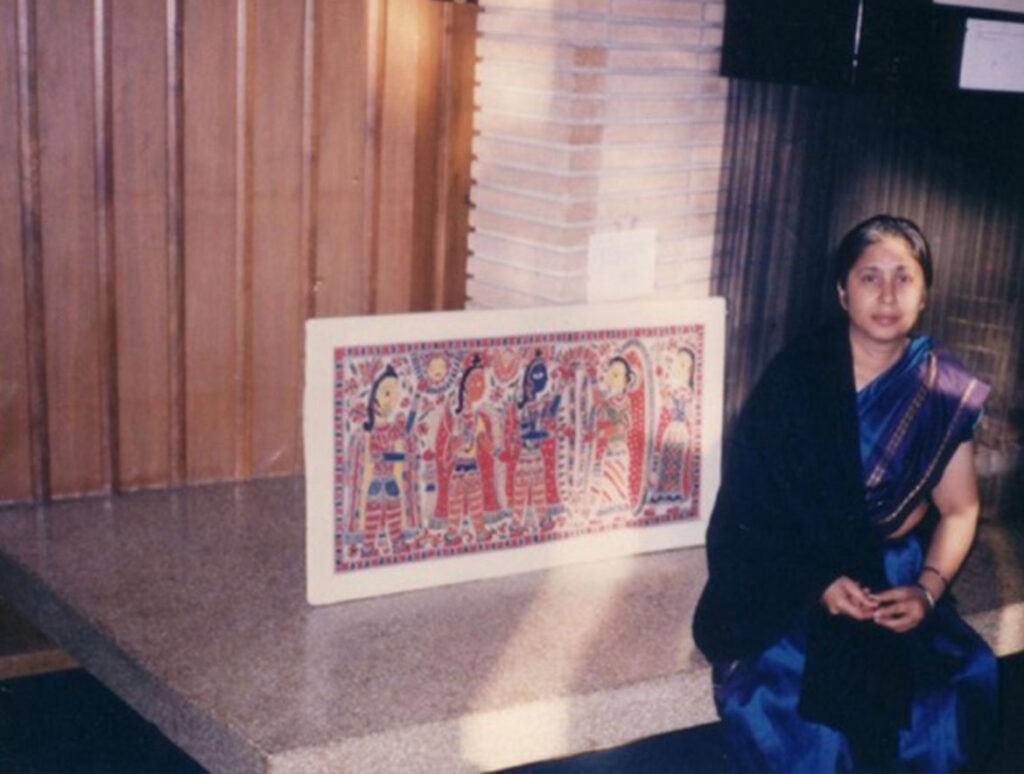
Stanford University San Francisco USA
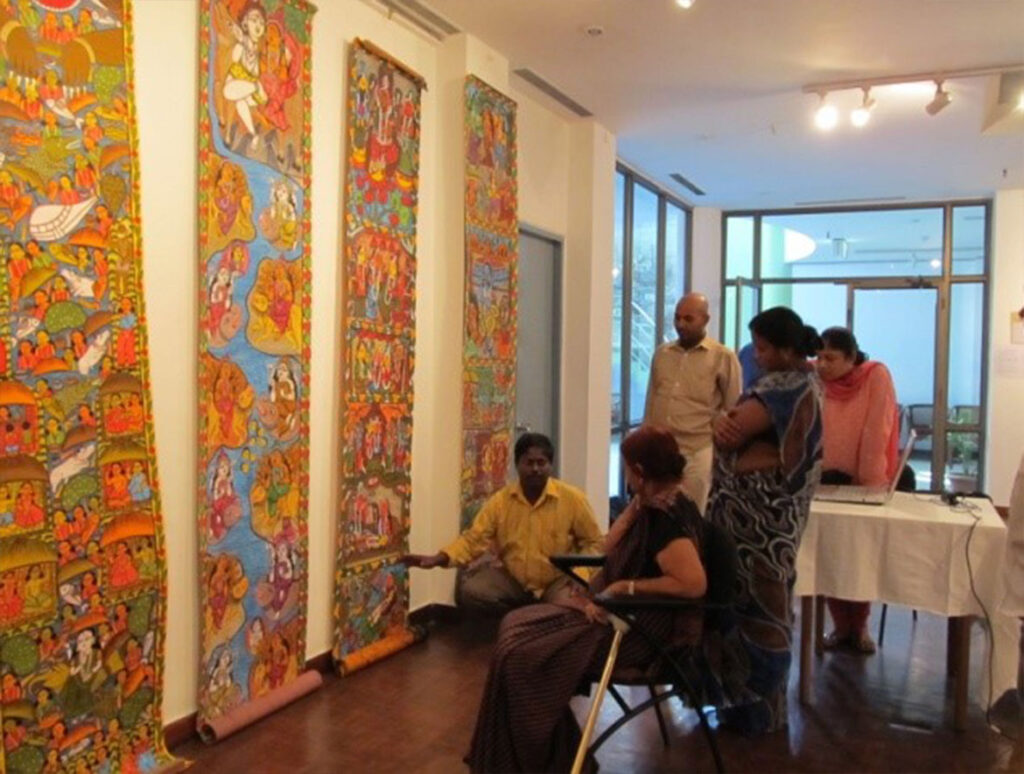
India International Center New Delhi
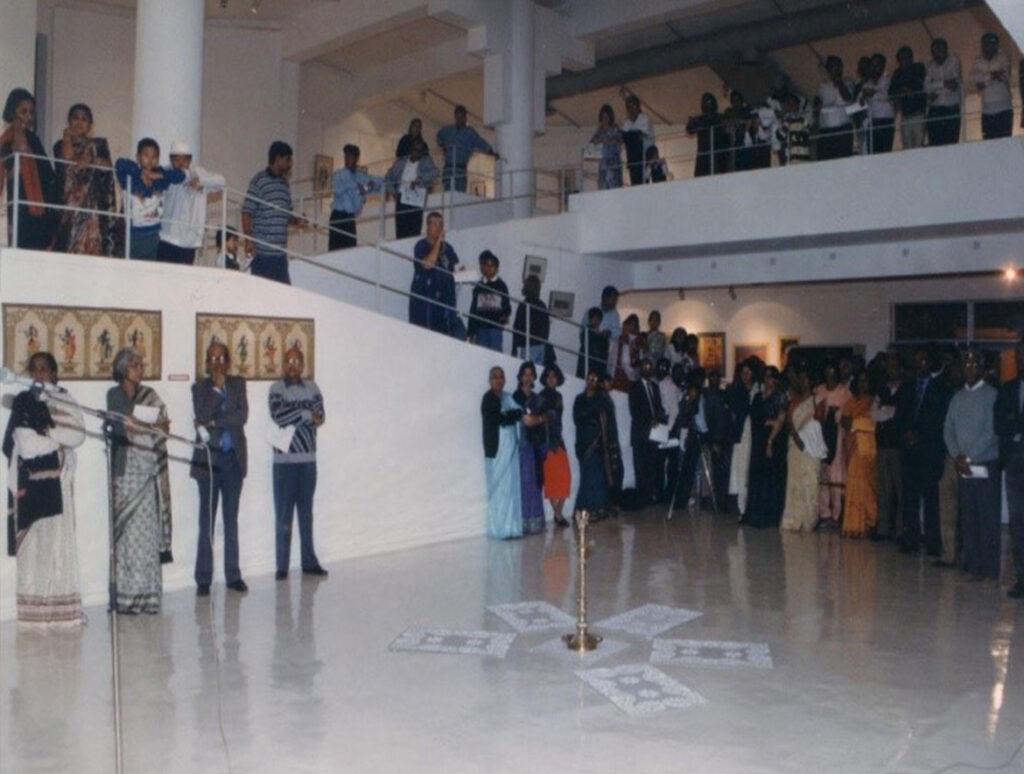
National Museum Botswana Africa
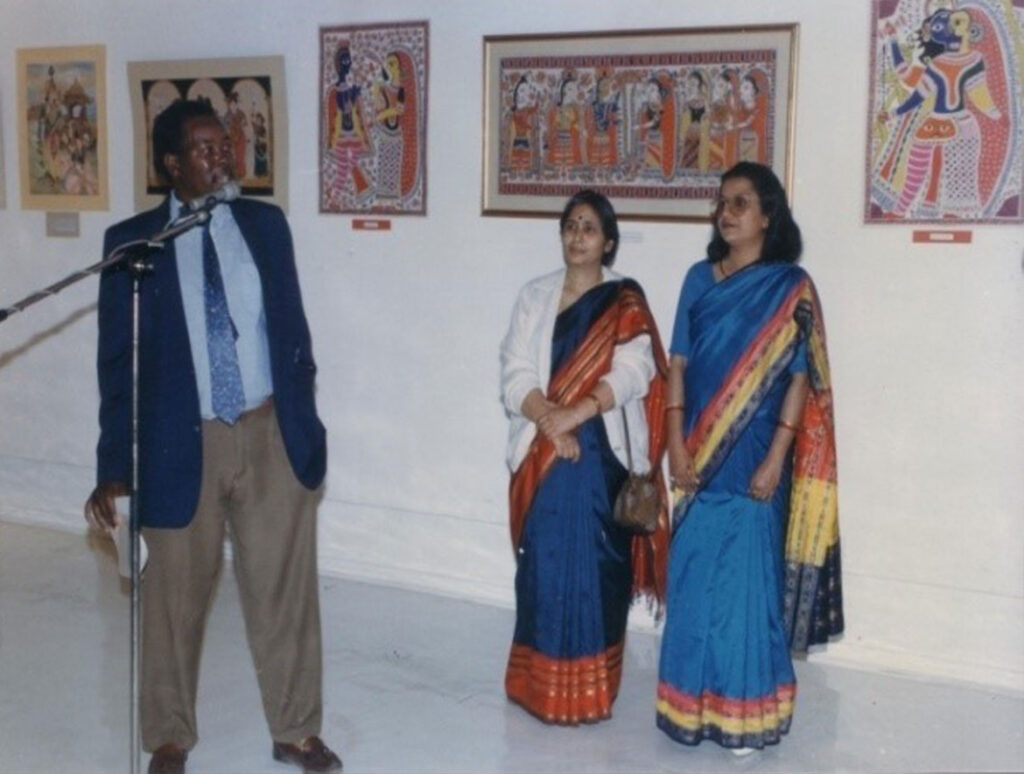
Director National Museum Botswana Africa
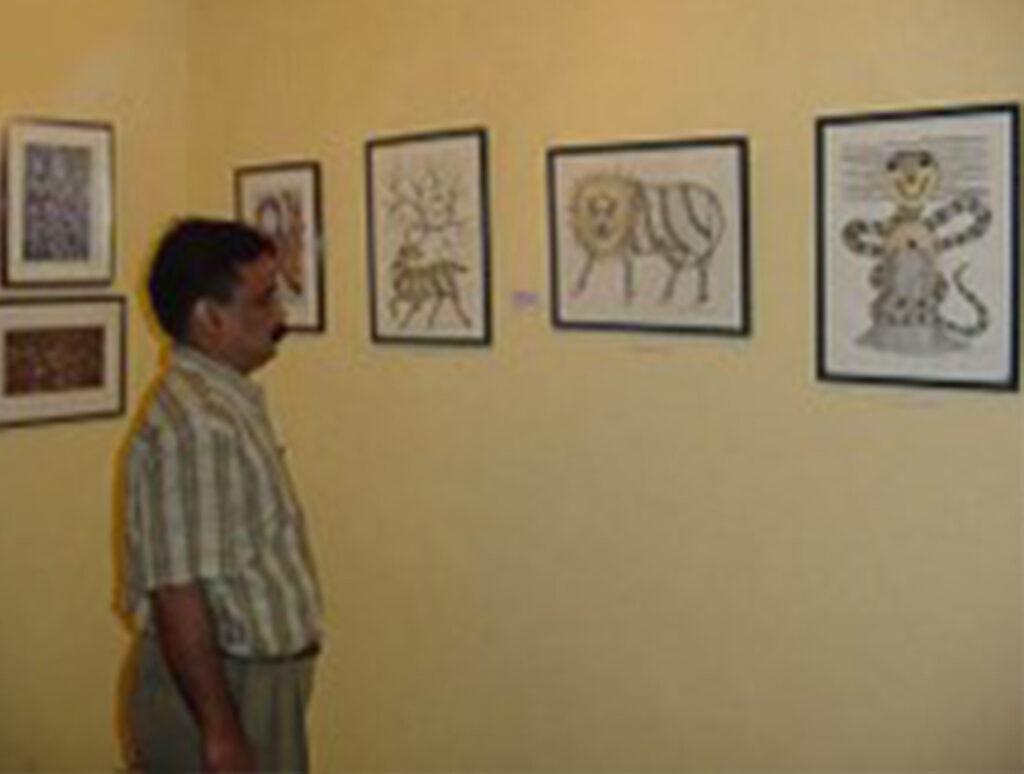
India Habitat Center, New Delhi
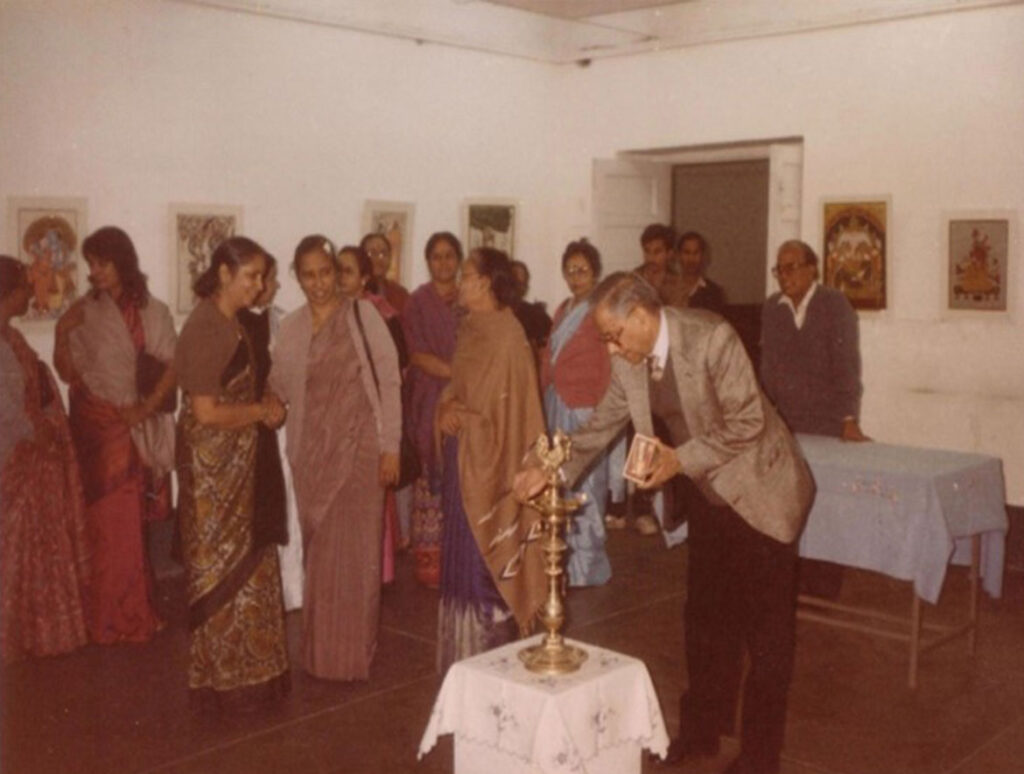
Prof. BBLal, Indian Fine Arts Society New Delhi
Few Paintings of the exhibition on ‘Fragrance of Upanishad in Folk Paintings’ in IIC Delhi
Concept of Creation
Myths and legends found in ancient scriptures (Vedas and others) are the main source of all creative arts in India.
Paintings on creation focus on purpose of human life, start of cosmic order, dualism in life i.e. good and evil, light and darkness etc. They go on to details of good thoughts, good deeds and acquisition of knowledge. I collected some motifs and symbols from village art and composed these paintings to make abstruse concepts of philosophy of ancient scriptures easily understandable. Paintings are in the form of alpana designs and carry myths and motifs that are still current in homes in India.
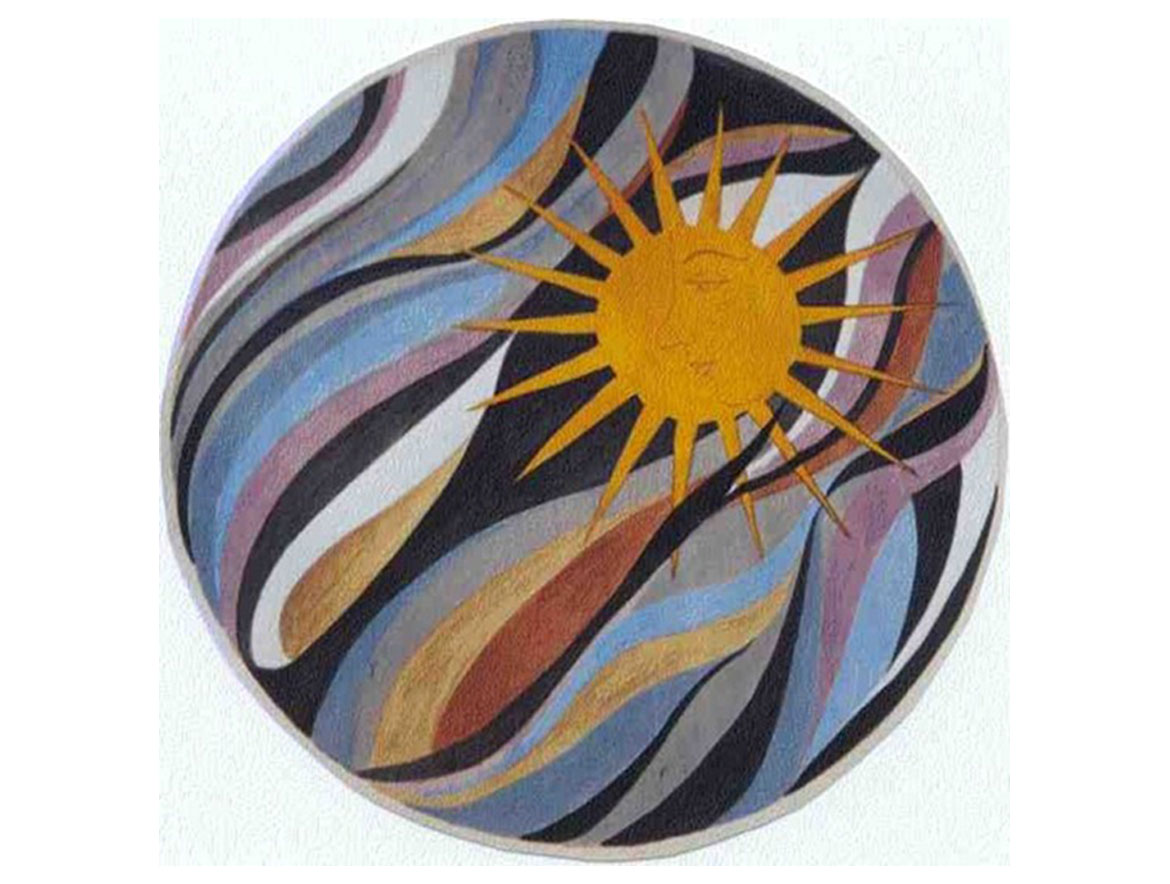
Beginning of Time
- In the beginning there was neither existence nor non-existence.
- Yet, there existed an un-definable and boundary-less source of energy known as Brahm or Supreme Being.
- Rgveda says that the fluid of ‘life, existence and freedom was trapped in darkness called Vratra.
- Before birth of universe there was a colossal struggle between forces of light and freedom and, forces of bondage and darkness.
- Supreme Being created a powerful god named Indra who vanquished Vratra, the force of non existence, with a blow of his mace.
Om
- The first sound ever in cosmos, Aum echoed when the first action ever was taken to vanquish darkness.
- Aum is identified as the essence of all sounds and is considered auspicious.
- Its chant at the commencement of a prayer is a way to invoke the Supreme Being to give blessings.
- In the painting, background signifies infinite space and the symbol of Aum signifies sound.
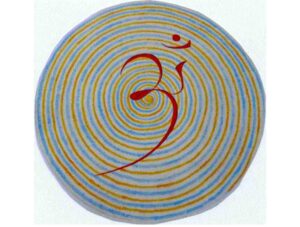
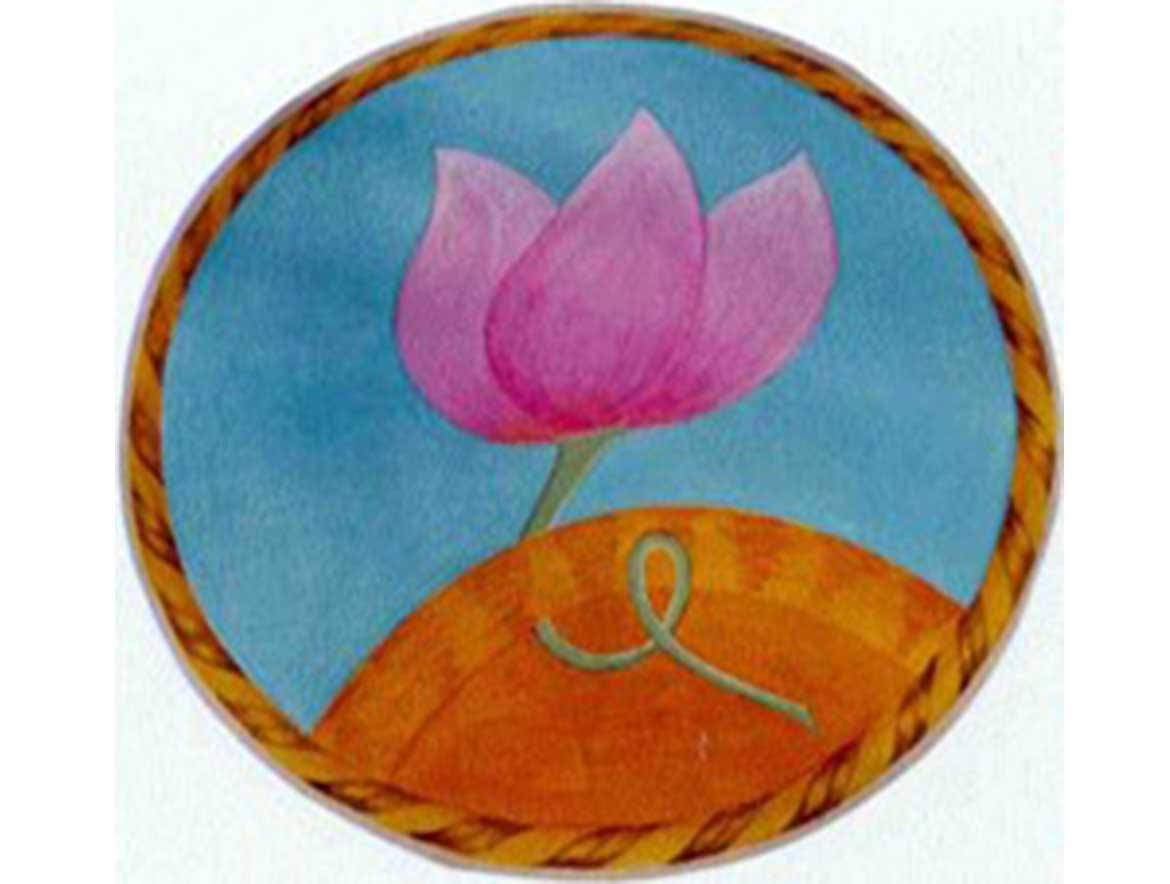
Bramhand
- Padma or lotus is the symbol of physical universe called Brahmand.
- It is the ultimate base or ground of all existence and is also a source and support. Finally, it is the point of return of every thing.
- A lotus with any subject in a painting is symbolic of association with the Supreme Reality. Lotus is freely used in folk art and in alpana
Five Tattvas
- This geometrical design depicts the five elements of physical body of living beings.
- These are water. fire, air, space and divine energy.
- The four lotus figures represent four elements.
- The larger lotus in the centre stands for divine energy that keeps all systems working.
- Fish represents a living being and the long and thin lotus plants connote vegetation.
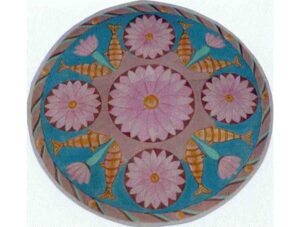

Purusha and Prakriti
- There are two kinds of reality, Prakriti and Purusha. Prakriti is a field of matter better translated as nature or existence that can be experienced.
- Purusha is the ultimate self, the transcendent subject, which itself can never be an object of experience.
- Both Prakriti and Purusha are in no way reducible to one other.
- The three yellow coloured sun motifs represent Purush and three pink coloured shapes resembling Mother Goddess symbolise Prakriti.
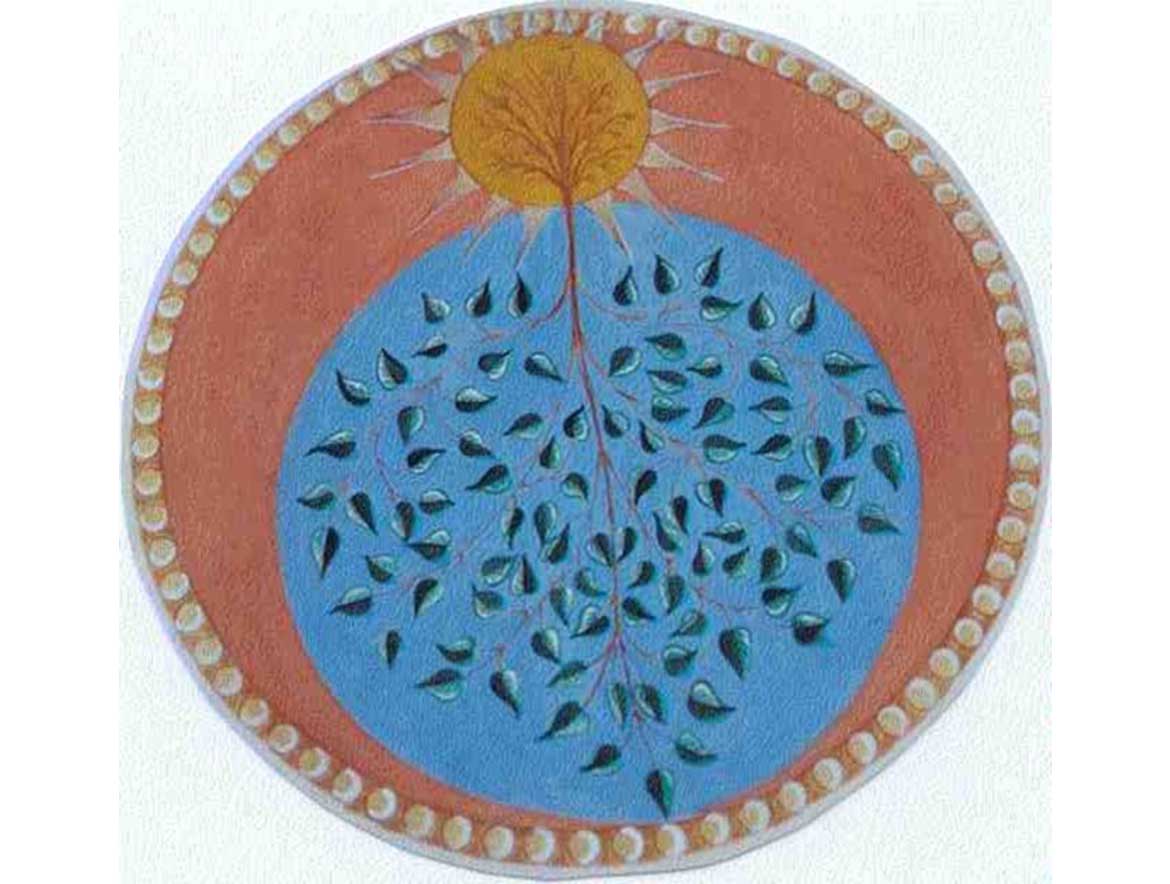
Tree of life
The tree of life is immortal. Roots are above branches. Roots are pure source of life, the Supreme Reality, which spread branches downwards. .
Three Gunas
- A very important feature of Hindu religion is the doctrine of three gunas or attitudes.
- These are: sattva, rajas and tamas.
- They are represented by white, red and black leaves.
- Sattva is associated with virtue, truth, wisdom, beauty and goodness.
- Rajas connotes passion and related qualities eg ferocity, violence, energy and force, but all involving action.
- Tamas refers to inertia, dullness, stupidity, gloom, wretchedness or unhappiness.
- Each individual is in a state of equilibrium within himself with a combination of these, in different proportions.
- The dominant quality in him indicates his preference for the type of life he desires and is living it.
- His face shows this: is he in a state of divine peace, is he bubbling with energy wanting action, or is he dull and pandering to lower order pleasures.
- He has the option to raise the dominant desire in him from a level of dull and inane existence to one of action and further up to the highest level of existence.
- The above set show the three attitudes.
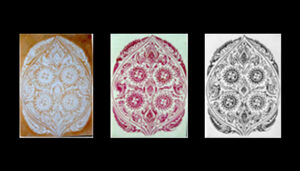
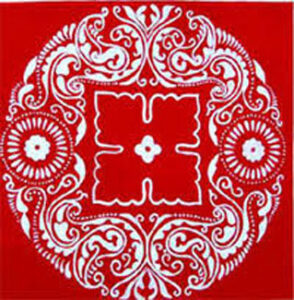
Jeevan Chakra
- Eternal cycle of rotation of everything is seen in the the sun motif.
- Circle of life as seen above consists of human being , plants, seasons, day and night.
- All follow a rhythm , a pattern set by Supreme Reality.
- This is not all. Man has to rise above this. Purpose of life is to aim for salvation or moksha and to get out of the endless rhythm of birth and death.
- Hindu religion lays down a blueprint for attainment of salvation
God's Gift to Humanity
- The design connotes the gift from God in form of support and padding given to humanity to lead a pure and pious life.
- Sun like figures on outermost peripheri represent Supreme Being, source of all energy.
- This is all pervading. Within the Being is an eye, patterned second circle, representing Indra or Ishwar who released the creative energy that led to creation of sun, moon, stars, seasons etc.
- Ishwar operates through three functionaries Brahma, Visnu and Siva representing creation, preservation and destruction respectively.
- It is shown in third circle of the three petalled lotus motif.
- Fourth circle is also of petal like forms but much thinner.
- Each form is composed of white, red and black representing three constituent qualities within a framework in which the universe operates.
- White represents purity or sat, red connotes action or raj and black stands for dullness, lethargy ie tamas, which leads to degeneration.
- Any attempt to change or disturb the equilibrium results in disorderliness.
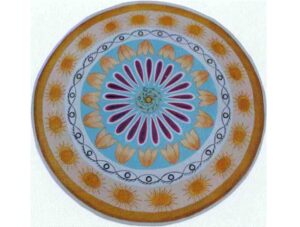
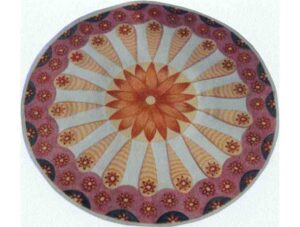
Attainment of Moksha
How does one attain salvation? Man has to move from laziness to higher levels.
In this painting black connotes inertia, laziness etc. Within it is action represented by motifs in red.
Action leads to self purification shown as spokes of the wheel.
The sun motif, also the lotus, refers to Brahma the final objective, the final aim.
In the Vedas this is referred to as moksha. It is freedom from the cycle of birth and death. It is that stage where the individual soul merges with Supreme Reality.
It is the state of becoming one with God .
Dharam Chakra
- Man is a combination of good and evil – referred to by the composite word devasuram.
- Deva means good and asura means evil.
- The combination of the two, form the word devasuram It is a Vedic motif quite often depicted in ancient Indian art.
- The purpose of life is to attain complete enlightenment, a state of consciousness in which all sense of ego, material possession and a separate selfhood is purged away and man becomes one with God.
- Man is responsible for consequences of his own thoughts, words and deeds. The painting, Dharamachakra, shows twelve faces of devasuram clinging to the wheel of life, sinking into the quicksand of materialism finally leading to degeneration.
- There are twelve stages. These start with ignorance of the purpose of existence followed by generation of desires; emergence of feelings; birth of ego; upsurge of five senses of mind; association of the five senses with material things; rise of material sensation; craving for material things; attachment to material things; increase in desire for possession and selfhood ; renewed births leading to perpetuation of suffering and death and resulting in a new beginning of the circle.
- During this movement towards degeneration, if the good or deva in man becomes stronger, he shuns evil and turns to a righteous path leading to salvation. Flower in the centre symbolises good qualities of human beings and his closeness to god.
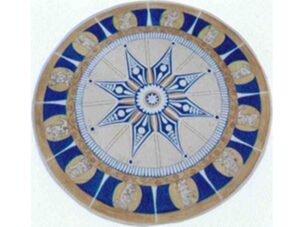
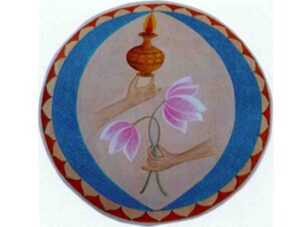
The Attainment
- When good qualities combine with knowledge the attainment of moksha is close.
- This is represented by lotus- the symbol of purity and, kalash or vessel with fire – a symbol of knowledge.
- The vessel is called Brahma kalash. It is the vessel which Brahma retains and from which he dispenses knowledge, happiness, prosperity and fulfilment of human expectation.
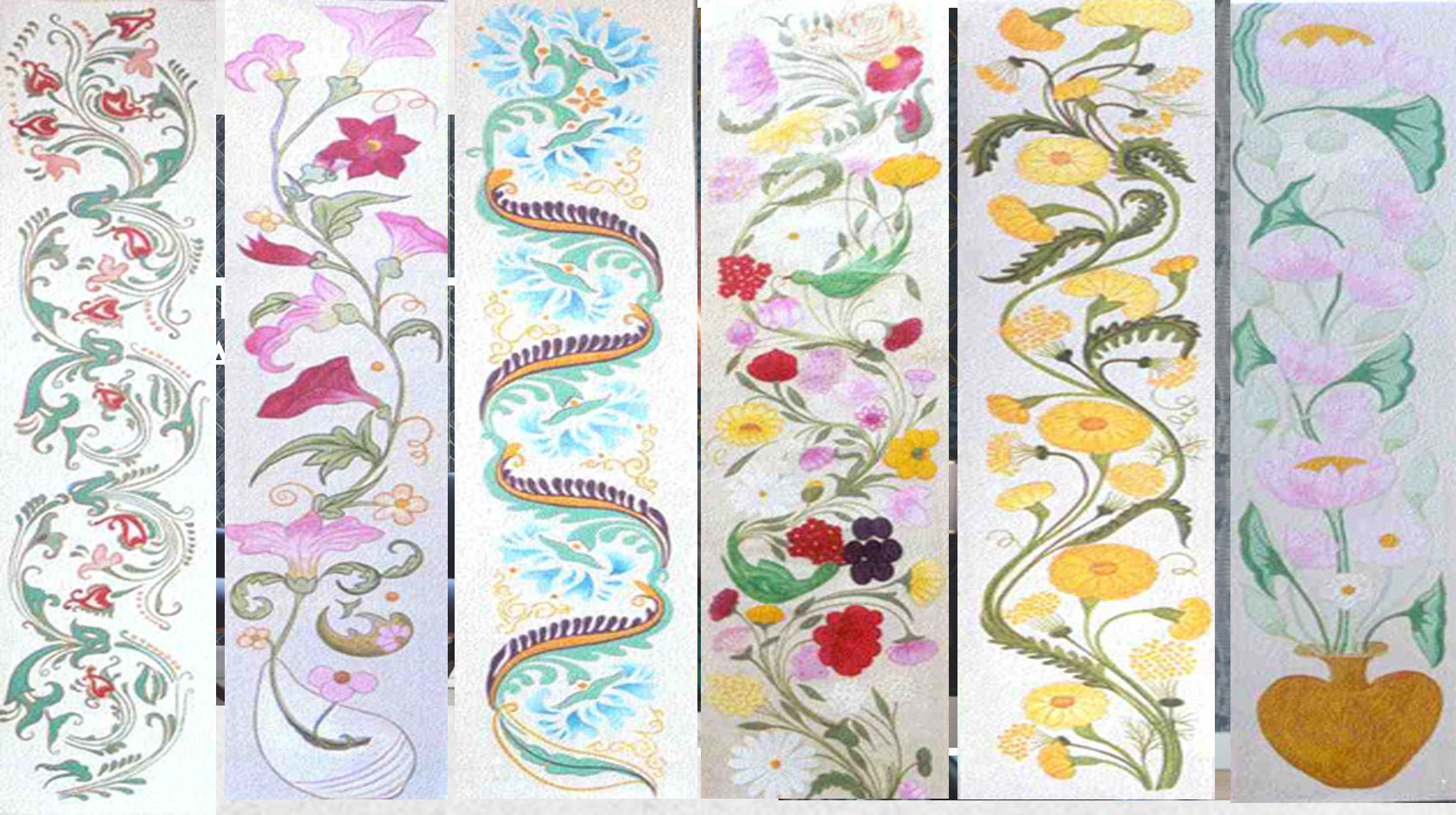
The orderliness or rhythm of the universe set by the Supreme Reality is called Rta. One manifestation of Rta is the season or ritu. Change of season is regarded as something more than a phenomenon of nature. It is an occasion to rejoice. Each season is welcomed with celebrations and festivities, songs and dances. This is more so in villages. There are celebrations at sowing and harvesting time. The advent of winter, spring as also rainy season is celebrated with songs, dances and rituals. In India there are six seasons. In each of these nature adorns itself with a variety of colours. The symphony of colours of different seasons has been captured in the paintings.

